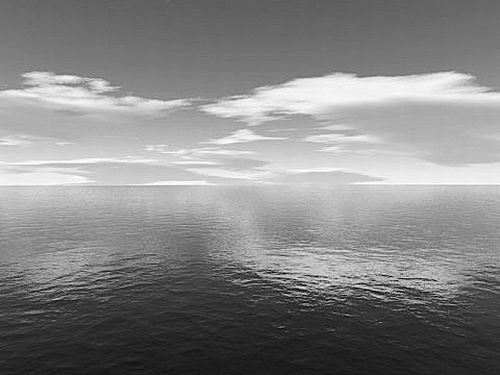

Clouds over the sea. Image credit: Pavel Losevsky / stock.adobe.com
An almost unlimited supply of freshwater in the form of water vapor exists above Earth's oceans, but has yet to be tapped, researchers say. A new study by U.S. scientists is the first to propose investing in new infrastructure capable of harvesting ocean water vapor as a solution to limited freshwater supplies around the world. The results of the study were recently published in Scientific Reports.
The study assessed 14 water-stressed regions around the world to determine the viability of a hypothetical structure that would harvest water vapor from above the ocean and condense it into freshwater, and whether this would remain viable in the face of continued climate change.
Water scarcity is a global problem, said study senior author Praveen Kumar, a professor of civil and environmental engineering at the University of Illinois at Urbana-Champaign. In the United States, due to the continuous decline in water levels in the Colorado River basin, it affects the entire western region. In subtropical regions, such as the western United States, there is enough solar radiation due to little cloud cover throughout the year, causing the nearby ocean to continuously evaporate water.
Previous wastewater recycling, cloud seeding and desalination techniques have had limited success, the researchers said. While desalination plants are deployed in some parts of the world, they face sustainability issues due to the generation of brine and heavy metal wastewater, so much so that the state of California recently rejected a move to build a new desalination plant.
"Ultimately, we need to find a way to increase freshwater supplies, as conservation and recycling of existing water sources, while essential, is not enough to meet human needs. We think the newly proposed method can do just that ’” Kumar said.
Using atmospheric and economic analyzes of a hypothetical offshore structure 210 meters wide and 100 meters high, the researchers concluded that harvesting moisture from the ocean's surface is feasible in many water-scarce regions around the world. The water yield of the putative structure is estimated to provide freshwater for large population centers in the subtropics.
A more favorable prediction of climate change is that dry regions will become drier and wet regions will become wetter. This increasingly drier condition favors new ocean vapor harvesting technologies. Climate projections show that ocean vapor flux will only increase over time, providing more fresh water.
As a result, the researchers say their proposed ideas are feasible in the face of climate change. This provides a much-needed and effective means of adapting to climate change, especially for vulnerable groups living in arid and semi-arid regions.
A bigger feature of this solution, the researchers say, is that it works similarly to the natural water cycle.
Francina Dominguez, a professor of atmospheric science at the University of Illinois at Urbana-Champaign and one of the study authors, said that the difference in this scheme is that it can direct the direction of ocean evaporation.
"When Praveen approached me with this idea, we both wondered why no one had considered this problem before, because it seemed like an obvious solution. No one had done it before, and I think it was because researchers were too focused on Onshore solutions. But our research shows that other options do exist," Dominguez said.
The researchers say the study opens the door to new infrastructure investments that could effectively address the growing global scarcity of freshwater.
(Originally titled "Collecting Water Vapor Above the Ocean, Scientists Propose a New Idea for Obtaining Infinite Freshwater")
Related paper information:
https://doi.org/10.1038/s41598-022-24314-2